Even as digital and traditional media compete for advertising dollars, some traditions remain resilient. A good example is the ongoing Upfront negotiating season, which began in the last quarter of 2017, during which media buyers make long-term spending commitments.
“Time has proven that making the long-term bet is a good idea for both sides in the equation,” says Chris Geraci, President, National Video Investment, OMD.
Geraci was one of the featured speakers at last week’s Beet Retreat in the City, along with Ashley J. Swartz, CEO of Furious Corp. In this video, they discuss the dynamics of the video marketplace and parse the semantics of what now constitutes “television.”
Geraci has seen lots of change since starting his advertising career in 1987 at BBDO New York. Yet amid a rapidly changing media landscape, the bedrock role of advertising hasn’t changed all that much.
“We support a crucial part of the entertainment industry by way of advertising dollars, that allows for production and better quality content to come forth if they can count on a longer term advertising commitment,” he says.
The economics of what is often referred to as a “futures market” remain in place during the negotiations that typify the Upfront.
“For the advertisers and agencies that service the advertisers, we know we’re generally getting a better deal by working in the Upfront model,” Geraci says. “It’s just more efficient from a cost-per-thousand basis, which is usually the metric that’s being used. It’s just a better deal in the Upfront.”
Asked by Swartz to describe the change he sees year to year, Geraci notes the increase in digital options available. “I think the consideration set keeps widening. We now have definitely more online opportunities to interact with what we consider to be premium content. So the choices are broader.”
Given a “solid economic backdrop,” Geraci says that with consumer marketers “having decent results” some are putting that money back into media. “There’s a little bit more supply in some areas, including sports, perhaps a little less in some of the linear TV dayparts. So that’s creating a little bit of pressure there.”
Asked by Swartz whether there remains a distinction between “television” and “video,” Geraci says he believes it’s all video right now.
“In fact, we removed the TV designation from all of our job titles to prove that point publicly. Television is simply a physical device as a way to deliver what quality content and ad-supported content is what we transact in.”
OMD’s clients have the same mindset, according to Geraci.
“For the most part, they’re in the same place,” he says. “I think it’s been very helpful that a lot of the linear TV based companies have sort of morphed what they serve the consumer to be a multiplatform experience.”
This video was produced at the Beet Retreat in City & Town Hall on June 6, 2018 in New York City. The event and video series are presented by LiveRamp, TiVo, true[X] and 605. For more videos from the series, please visit this page.







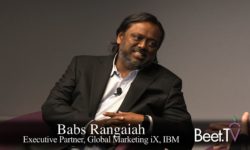
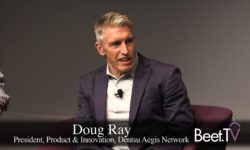


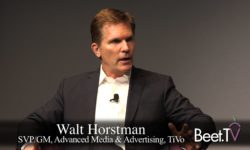
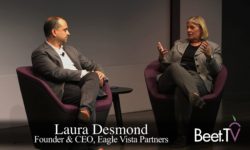
![true[X]’s Midha Revels In Vogue For Lower Ad Load](https://www.beet.tv/wp-content/uploads/2018/06/thumbnail-55-250x150.jpg)
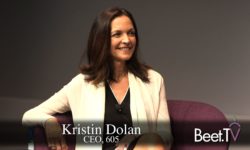
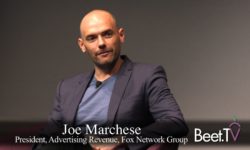
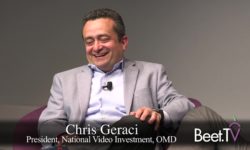







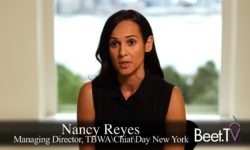
![The Next Frontiers For true[X]: Voice Activation, Engagement Ads In Live Events](https://www.beet.tv/wp-content/uploads/2018/06/thumbnail-25-250x150.jpg)




















